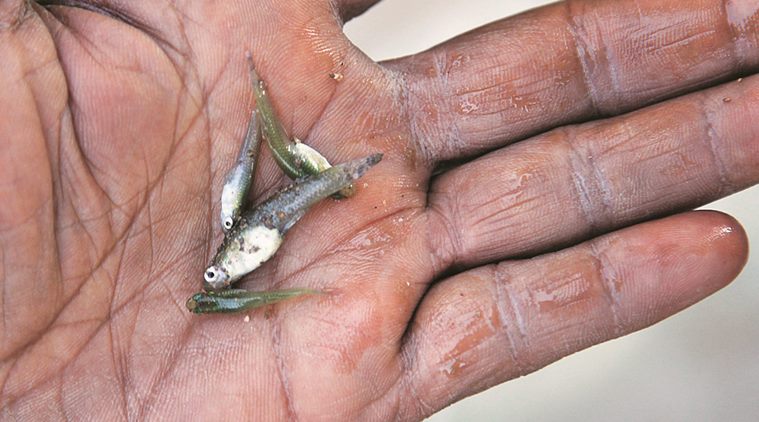Stay updated with the latest - Click here to follow us on Instagram
Health, fisheries departments join hands to use Gambusia fishes to combat malaria, dengue larvae
The Chandigarh health and fisheries departments will use gambusia fishes in large numbers to eliminate the malaria and dengue larvae present in stagnant water points at several places in the city.
 Mosquitofish Gambusia at fish farm near Sukhna Lake in Chandigarh on Thursday, May 26 2016. Express photo by Jaipal Singh
Mosquitofish Gambusia at fish farm near Sukhna Lake in Chandigarh on Thursday, May 26 2016. Express photo by Jaipal Singh
The Chandigarh health and fisheries departments will use gambusia fishes in large numbers to eliminate the malaria and dengue larvae present in stagnant water points at several places in the city.
Officials said a communication was recently sent to the health department in which the fisheries department agreed to provide the fishes – also known as anti-mosquito fishes. “We will provide the fishes so that we can end the mosquito larvae present in the ponds and other places in the city,” said Dr Kanwarjit Singh, joint director, UT Animal Husbandry.
He said the health department had identified a list of potential points where the fishes would be used. “The fishes are anti-larvae and they eat them. It reduces the number of population of larvae,” said Singh. “We are producing the fishes in our farm at Sukhna Lake and providing them free of cost.”
Singh maintained that the general public could also approach the department to get the fishes. “But they need a clearance from the malaria wing of the health department. We don’t want to get it misused because the species is rare,” he said.
Dr Gaurav Aggarwal, anti-malaria officer of the UT health department, said using the fish was an effective way to finish the larvae. “It will help the public and reduce chances of dengue and malaria,” he said.
Earlier this month, Chandigarh became the first city in the country to launch the malaria elimination programme. Under the programme, the department will eliminate malaria by 2020. The health department has already started a round-the-clock helpline for city residents who can report about breeding spots and stagnant water points. Last year, the city had recorded 152 cases of Malaria. This year, one positive case of malaria has been found till date.
‘Positive cases have travel history’
While as the health department has so far recorded more than two dozen positive malaria cases in the city, officials say that all of them are coming from outside and are detected in Chandigarh.
At present, the officials say that more than 24 cases have been found positive for malaria. A health official said that last week, a Chandigarh resident who was found positive too was infected from a family member who had a travel history. As per the details provided by the health department, maximum patients belong to Uttar Pradesh, followed by Punjab and other neighboring states. “Once we come to know about a positive malaria case, we follow a protocol and according to which all the people within 150 metres of that area are tested,” said a senior health official.
What is a Gambosia fish?
This fish is a mosquito fish used to end mosquito larvae. Its life span is barely one year. It has been now produced at several places in the country during the summer as it cannot cope with the weather conditions in winter. According to the fisheries department, they breed them in March and then use them up to December.
Where are these fishes produced in Northern region?
Officials say that only Chandigarh only breeds the rare fishes and also supplies to several states in north India. In the city, the fisheries department produces at a farm near Sukhna Lake every year, since the 1990s.
Where can the fishes can be used?
These can be only used in stagnant water points, artificial fountains and ponds inside houses.







